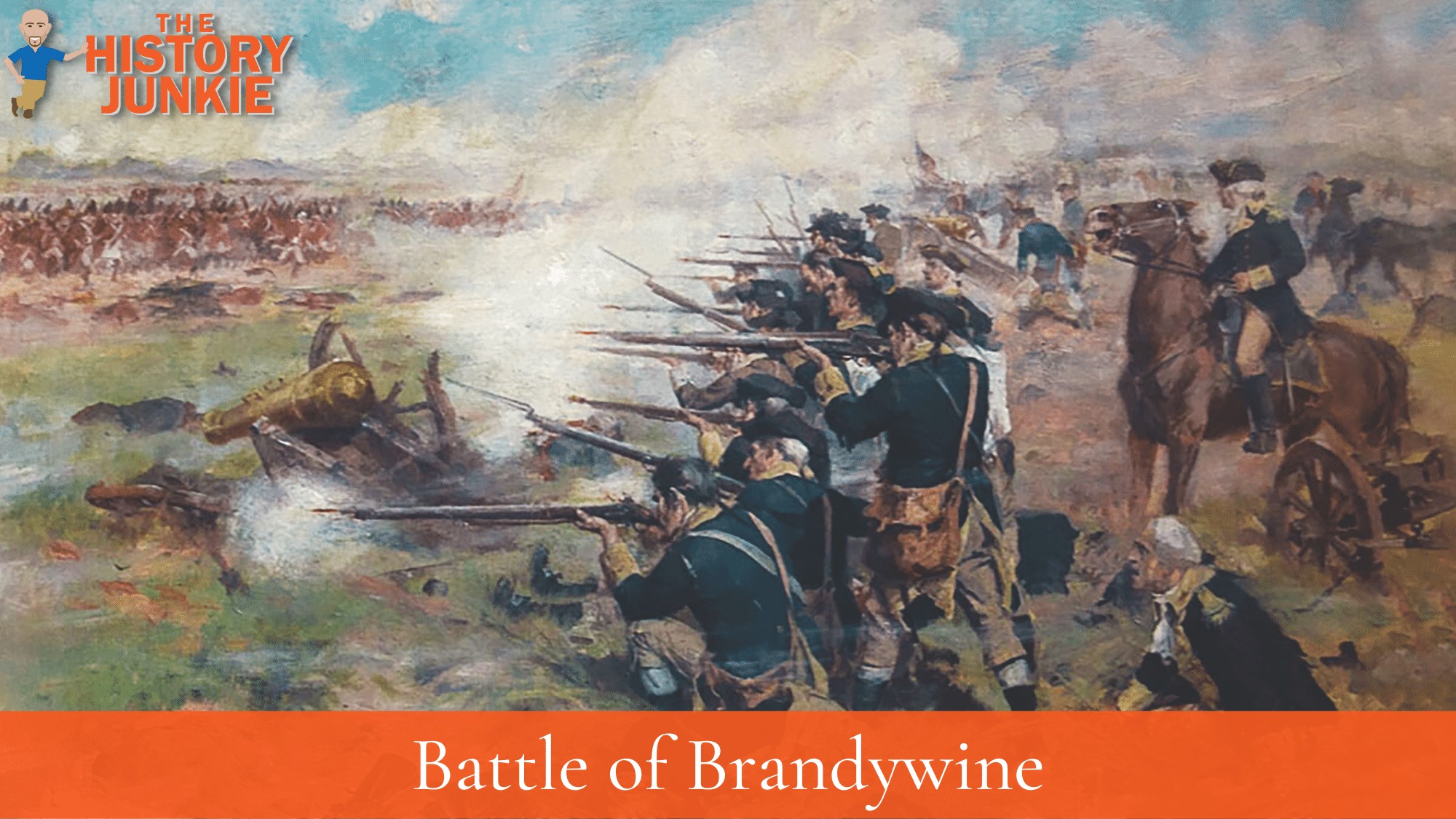The Battle of Brandywine was a significant victory for the British that led to the capture of Philadelphia, but it left General John Burgoyne vulnerable.

The British General Howe, with a force of 16,000 men, landed at the head of Elk River in Delaware on August 15, 1777.
It was obvious that his intention was to occupy Philadelphia, so General George Washington immediately put the American army in motion toward that city to prevent it from falling into the hands of the enemy.
The two armies met at Brandywine Creek, in Delaware, on September 11, 1777.
The Battle
At daybreak on the morning of the 11th, the British army advanced in two columns. The first column, commanded by Lieutenant General Knyphausen, took the direct road to Chadd's Ford, while the other column, commanded by Lord Cornwallis, moved up on the west side of the Brandywine to its fork.
There, they crossed both branches of the river around two in the afternoon and marched down on its eastern side with the intention of turning the right wing of the American army.
General Washington, on receiving intelligence of the British advance, made the proper dispositions to receive them.
The divisions commanded by Major Generals John Sullivan, William Alexander (Lord Stirling), and Adam Stephen advanced a little farther up the Brandywine and fronted the column of the approaching enemy.
Major General Anthony Wayne's division, with Maxwell's light infantry, remained at Chadd's Ford to keep Knyphausen in check.
Major General Nathanael Greene's division, accompanied by General Washington, formed a reserve and took a central position between the right and left wings of the American army.
The divisions detached against Cornwallis took possession of the heights above Birmingham Church, their left reaching towards the Brandywine. The artillery was judiciously placed, and their flanks were covered by trees.
At about four o'clock in the afternoon, Lord Cornwallis formed his line of battle and began the attack. The Americans sustained it for some time with intrepidity, but the right at length gave way.
The remaining divisions, exposed to a galling fire on the flank, continued to break on the right, and the whole line was soon completely routed.
As soon as Cornwallis had commenced the attack, Knyphausen crossed the ford and attacked the troops posted for its defense.
After a severe conflict, these troops were compelled to give way. The retreat of the Americans, which soon became general, was continued that night to Chester and the next day to Philadelphia.
The loss sustained by the Americans in this action is estimated at three hundred killed and six hundred wounded. Between three and four hundred, principally the wounded, were made prisoners. The loss of the British was stated to be rather less than one hundred killed and four hundred wounded.
Among the wounded were two general officers: the Marquis de Lafayette and General William Woodford.
Count Casimir Pulaski, a Polish nobleman, also fought with the Americans in this battle.
The Aftermath of the Battle of Brandywine
The Battle of Brandywine was a major defeat for the Americans, but it was not a decisive victory for the British.
The Americans were able to retreat in good order, and they continued to fight for their independence. The battle did, however, open the way for the British to capture Philadelphia, which they did on September 26, 1777.
General William Howe's capture of Philadelphia left General John Burgoyne vulnerable. Despite Howe's success, the vulnerability of Burgoyne would be exposed at Saratoga, which would give the Americans a much-needed victory and bring France into the war.
